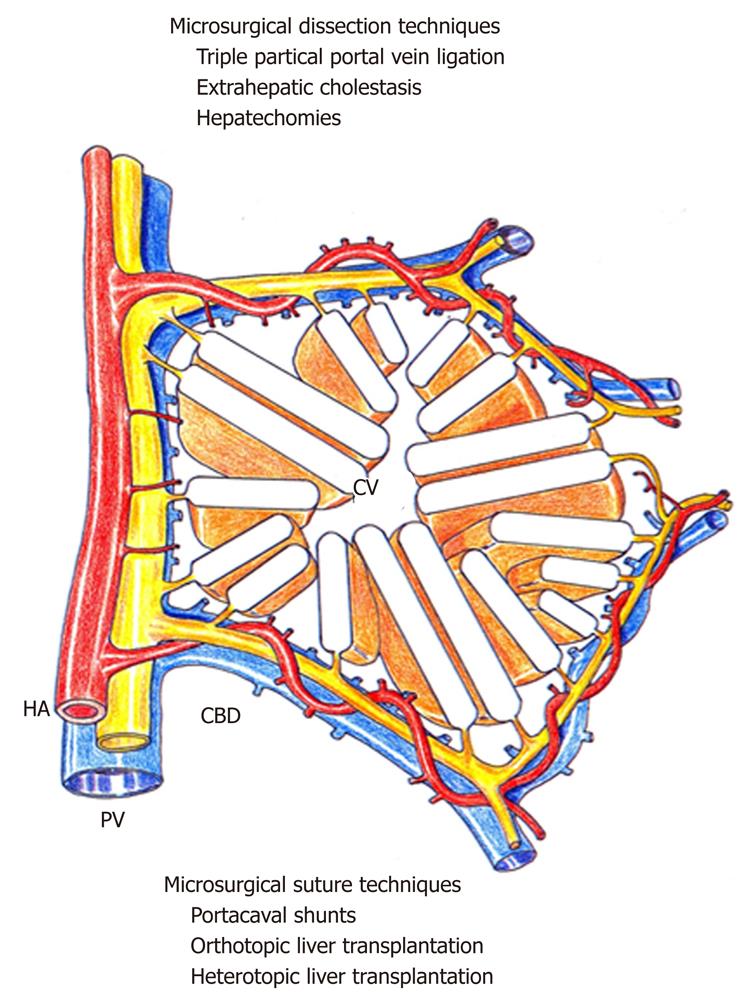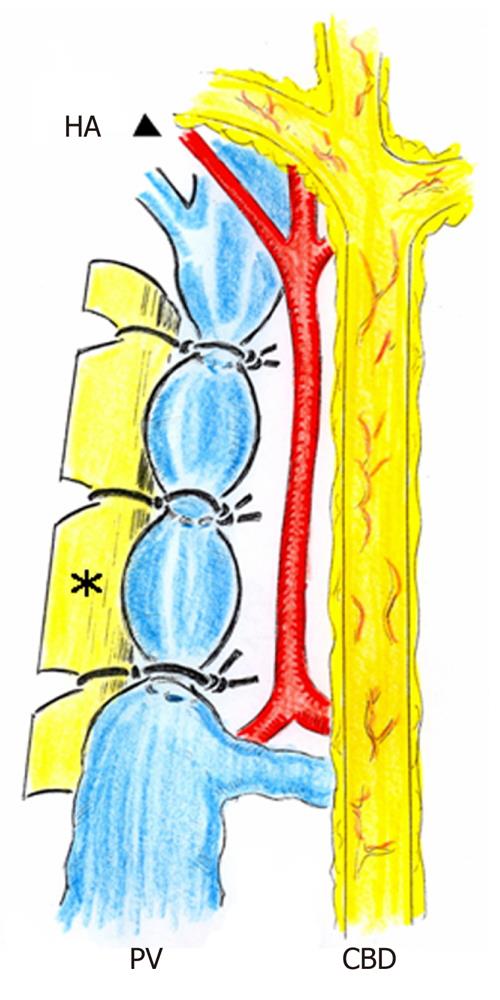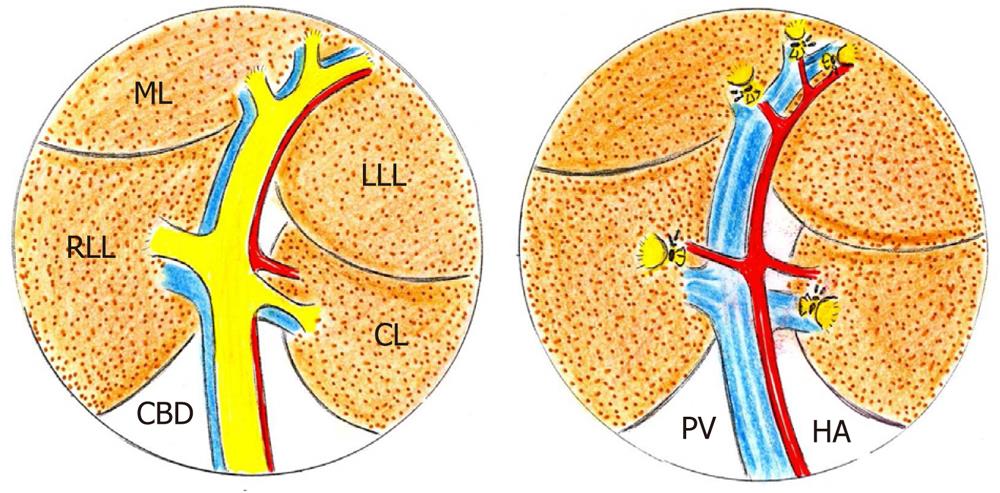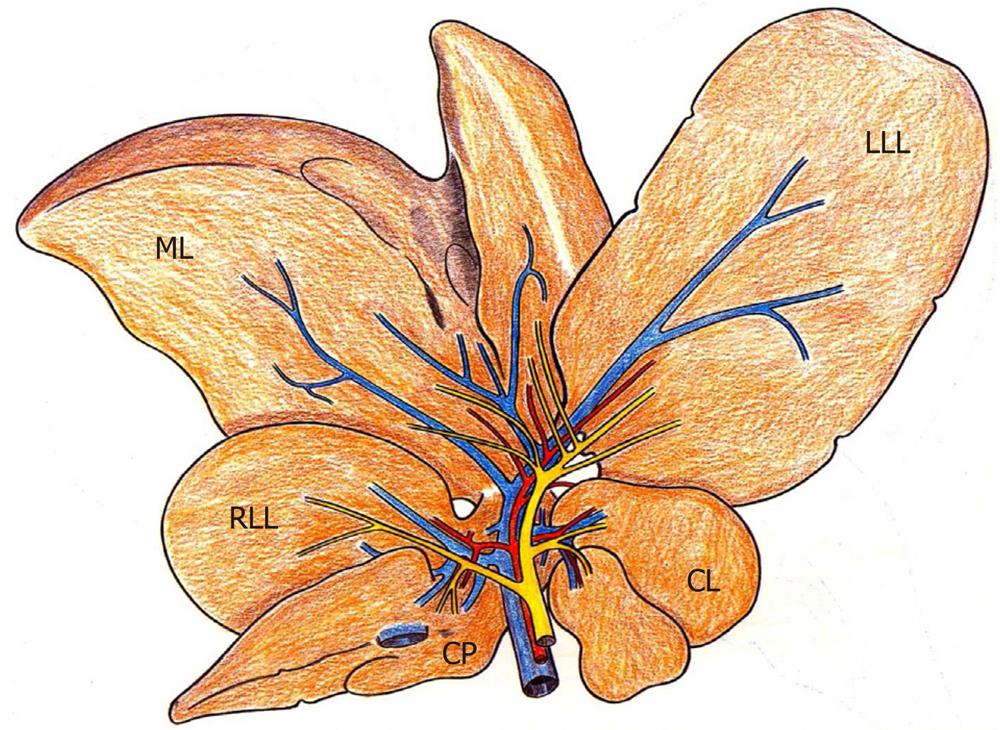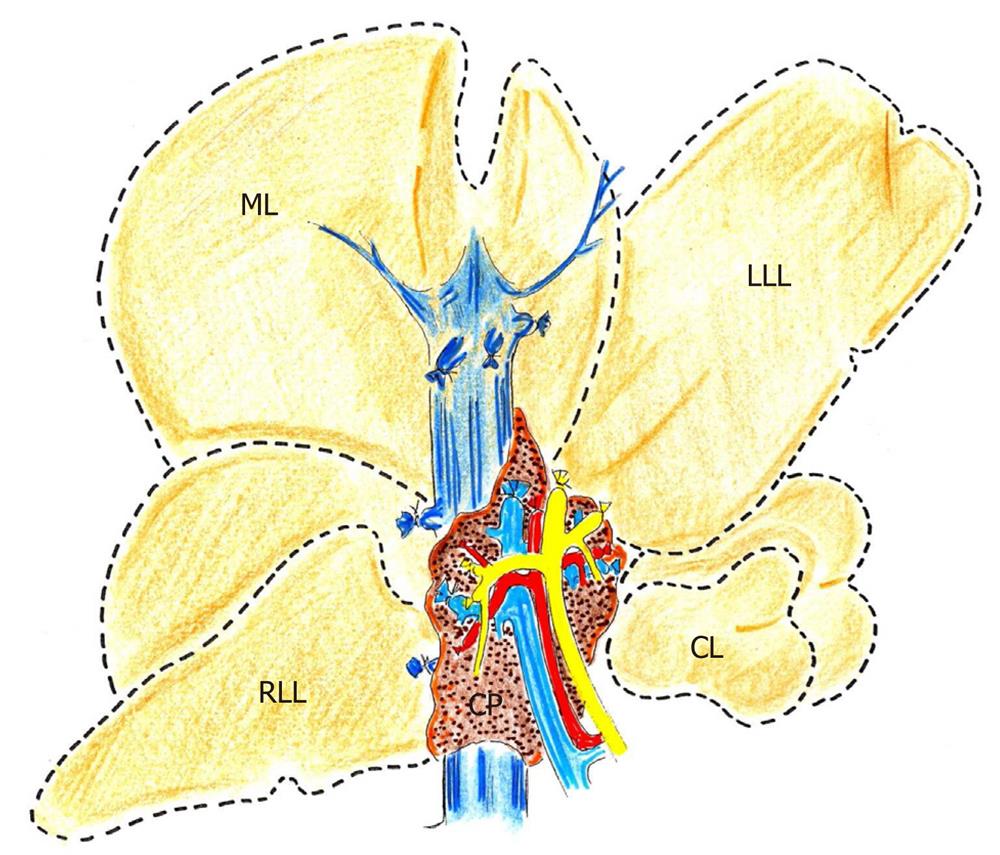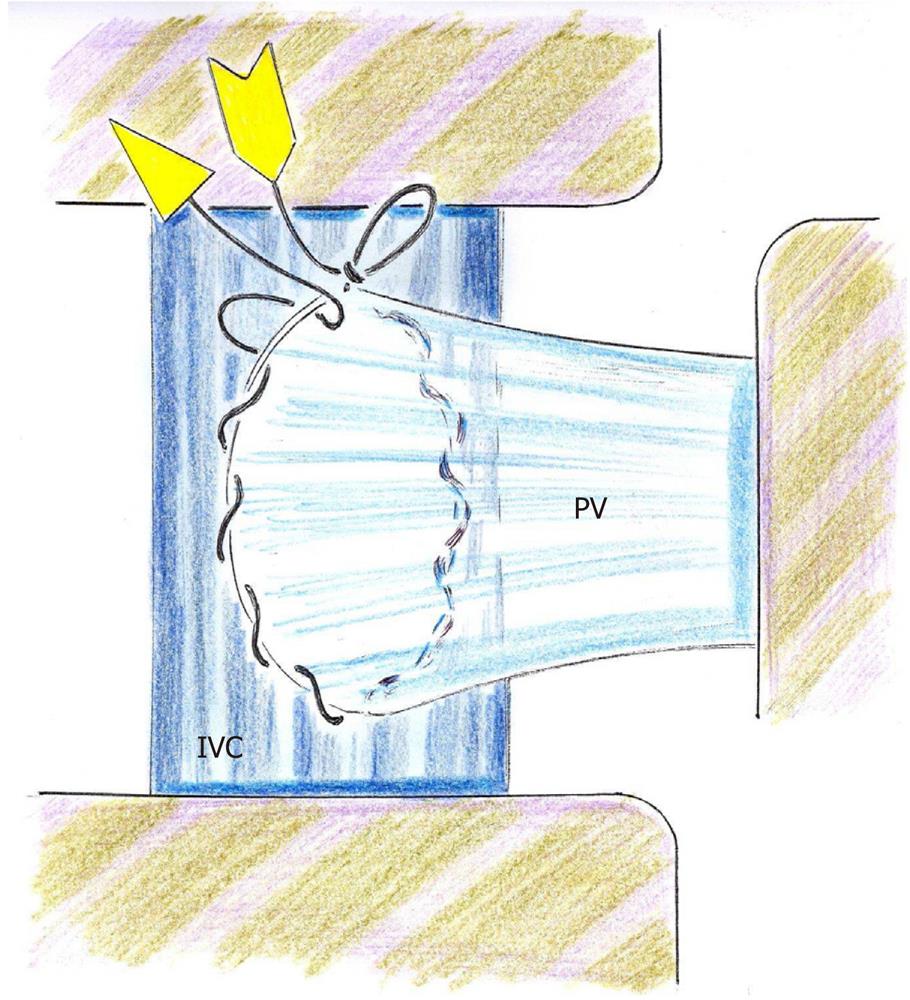Copyright
©2012 Baishideng Publishing Group Co.
World J Hepatol. Jul 27, 2012; 4(7): 199-208
Published online Jul 27, 2012. doi: 10.4254/wjh.v4.i7.199
Published online Jul 27, 2012. doi: 10.4254/wjh.v4.i7.199
Figure 1 Microsurgical techniques used in liver research.
The liver has been schematically represented as a hepatic functional unit formed by parenchyma (hepatic trabeculae) and stroma (portal space with vascular and biliary structures). The microsurgical experimental models are listed around this hepatic functional unit, grouped according the predominantly surgical technique used. Thus, hilar and parenchymal microdissection and vascular and biliary microsutures are the two fundamental microsurgical techniques used to obtain experimental models of liver diseases. Therefore, both microsurgical techniques can be considered for classifying the experimental models developed. HA: Hepatic artery; CBD: Common bile duct; PV: Portal vein; CV: Centrolobular vein.
Figure 2 Prehepatic portal hypertension in the rat by triple partial portal vein ligation.
Three partial ligatures are performed in the superior, medial and inferior portion of the portal vein and maintained in position by the previous fixation of the ligatures to a sylastic guide (*). PV: Portal vein; HA: Hepatic artery; CBD: Common bile duct.
Figure 3 Microsurgical technique of extrahepatic cholestasis in the rat.
This microtechnique consists of resecting the bile ducts that drain the four lobes of the liver in continuity with the common bile duct up to the beginning of its intrapancreatic segment (left side). The biliary branches of the caudate lobe, right lateral lobe, middle lobe and left lateral lobe are dissected, ligated and sectioned close to the hepatic parenchyma (right side). ML: Middle lobe; LLL: Left lateral lobe; RLL: Right lateral lobe; CL: Caudate lobe; CBD: Common bile duct; PV: Portal vein; HA: Hepatic artery.
Figure 4 The hilar anatomy of the rat liver.
Drawing showing the multilobulated rat liver with lobe-independent portal (blue) and arterial (red) vascularization and biliary (yellow) drainage. ML: Middle lobe; LLL: Left lateral lobe; RLL: Right lateral lobe; CL: Caudate lobe; CP: Caudate process.
Figure 5 Hepatectomies in the rat.
Drawing showing the microsurgical 70% (middle lobe (ML) and left lateral lobe (LLL)) and 95% [ML, LLL, right lateral lobe (RLL) and caudate lobe (CL)]. The microsurgical technique left the caudate process (CP) intact after 70%, 90% and 95% hepatectomies.
Figure 6 End-to-side portacaval shunt in the rat.
The construction of a loop at the end of the suture facilitates the early approximation between the portal vein and the inferior vena cava, as well as its ending. Thus, when it reaches the end corner, the loop is untied by pulling on the end and the suture is tied to it. PV: Portal vein; IVC: Infrahepatic inferior vena cava.
Figure 7 Orthotopic liver transplant in the rat.
The first anastomosis that is carried out in the orthotopic transplant of the rat's liver is end-to-end between the suprahepatic inferior vena cava of the donor and recipient is represented on the top. The suture of the posterior semi circumferences of both vessels is intraluminal and from left to right of the animal. Next, the extraluminal suture is made on the anterior semi circumferences in the same way. Before finishing this anastomosis, saline is perfused inside to eliminate air that can cause a gas embolism when revascularizing the transplanted liver. The end-to-end portal anastomosis is made second, using the cuff technique. It is convenient to perfuse the liver through the portal route before the anastomosis is completed to eliminate potassium and acid catabolites, which accumulated during hypothermic preservation, from its circulation. Once proceeding with portal revascularization of the liver, the end-to-end anastomosis of the infrahepatic inferior vena cava of the donor and recipient is performed using the cuff technique. Then, arterial revascularization using the donor aorta, in continuity with the celiac trunk and hepatic artery, is made. End-to-side anastomosis is performed with the infrarenal abdominal aorta of the recipient. Lastly, the choledococholedochostomy is performed (bottom). 1, portal vein anastomosis; 2, infrahepatic inferior vena cava anastomosis; 3, arterial anastomosis; 4, choledococholedochostomy.
Figure 8 Heterotopic partial liver transplantation in the rat.
First, an end-to-side anastomosis is carried out by microsurgical suture technique between the infrahepatic-IVC of the donor and the infrahepatic-IVC of the recipient. Next, the end-to-end portal anastomosis is carried out using the cuff technique (top). Once the graft is revascularized via the portal vein, the end-to-end aortic anastomosis is carried out by continuous suture (bottom). p: Portal vein anastomosis; a: Aortic anastomosis; v: Inferior vena cava anastomosis. IVC: Inferior vena cava anastomosis; PV: Portal vein.
- Citation: Aller MA, Arias N, Prieto I, Agudo S, Gilsanz C, Lorente L, Arias JL, Arias J. A half century (1961-2011) of applying microsurgery to experimental liver research. World J Hepatol 2012; 4(7): 199-208
- URL: https://www.wjgnet.com/1948-5182/full/v4/i7/199.htm
- DOI: https://dx.doi.org/10.4254/wjh.v4.i7.199









